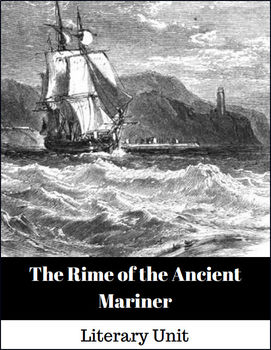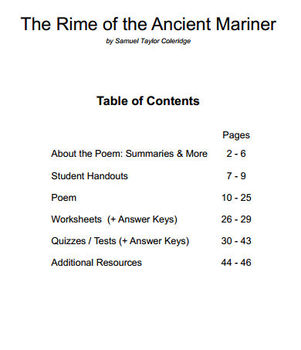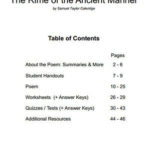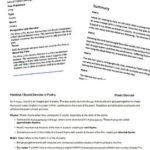Only logged in customers who have purchased this product may leave a review.
Products
- Home
- /
- Shop
- /
- By Subject
- /
- Language Arts
- /
- Curriculum & Textbooks
- /
- Literature & Poetry
- /
- Comprehensive Novel Studies
- /
- The Rime of the Ancient Mariner – Coleridge
The Rime of the Ancient Mariner – Coleridge
$5.00
The Rime of the Ancient Mariner by the English poet Samuel Taylor Coleridge (British Romantic Literature) is the basis for this Literary Unit designed for 10th, 11th, and 12th grade students.
The unit is divided into the following sections:
Summaries and More: Includes summary, brief review, symbols of the poem, tone, setting, point of view and more.
Student Handouts: Sound devices in Poetry + Imagery & Figurative Language in Poetry
The Poem Worksheets: Examining and Analyzing Metaphors
Quizzes and Tests: Poetic devices quiz, Multiple choice on the poem, Short Answer and Essay for the poem
Additional Resources: Extended Activities + Albatross illustration
Answer Keys are provided.
Related products
-
 $15.00Buy Now
$15.00Buy NowTeachers edition for English II (2)
English II (2) is typically studied in 10th grade. This curriculum is large and has been broken up into to two separate parts.
Part 1 of English 2 (355 pages) covers:
- Integrating Technology / Using the Internet
- Reading / Understanding What you Read
- Writing / Building upon Your Writing Skills
- Writing / Taking a Second Look
Part 2 of English 2 (412 pages) covers:
- Listening, Viewing, Speaking / Communicating Face to Face
- Literature / Discovering the World, Analyzing Ourselves (Themes, Plot, Conflict, Character and more)
-
 $12.00Buy Now
$12.00Buy NowHere is a ready to go, 155 page literature resource for To Kill a Mockingbird by Harper Lee. It is a complete study which includes summaries, vocabulary, quizzes, essays and a final test! This resource with take you step by step, chapter by chapter. Students will be engaged in every aspect of the novel.
-
 $3.00Buy Now
$3.00Buy NowBiography & Literary analysis – Ernest Hemingway
631 pages











Reviews
There are no reviews yet.